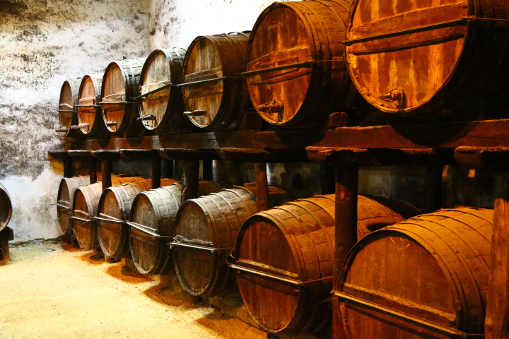Humans have been cultivating vines for millennia, an agricultural activity as ancient as it is changing. In the world of wine there are many customs and practices that have been acquired over the centuries. Although we might think that in ancient times the preparation and preservation of wine was not very different from how we do it today, the truth is that there are significant differences.
Regarding the preservation of wine, for thousands of years the commonly adopted method was to preserve it in amphorae. Amphorae are earthenware vessels that cultures such as the Romans and Greeks used to preserve and transport not only wine, but also other products such as oil. Its elaboration is simple, the handles facilitated its handling and the transport by boat was very comfortable and safe, since the holds were filled with sand, partially burying the amphorae, thus avoiding the shocks and vibrations typical of navigation.
However, land transport was much more problematic. At that time the vehicle par excellence for the shipment of goods by land was the cart, and amphorae tended to break easily during travel.
Another characteristic of wine consumption in the Ancient World was that aged wines were practically not drunk, since their preservation was difficult and it was normal for them to turn sour and turn into vinegar. Both Romans and Greeks preferred young and fruity wines.
But all this began to change around the middle of the first century B.C. when the Romans began their conquest of Gaul and discovered how its inhabitants stored beer. The Gauls used oak barrels and the Romans began to imitate this custom. At first because it was much more convenient to transport them by land. Thus, the Roman legions adopted this method, which was soon imitated by traders. In short, wooden barrels were more resistant, their weight was less than that of amphorae and, since they could be rolled, they could be moved more easily.
Over the years it was discovered that preserving wine in wood improved its taste, since when wine was shipped in barrels over long distances it not only did not become corrupted, but its taste was more refined.
Then came the fall of the Roman Empire, the barbarian conquests and the High Middle Ages. During these centuries, much of the knowledge accumulated by the Romans was lost, and the same happened with the preservation of wine. It continued to be stored in wooden casks, but techniques such as burning sulfur in a barrel before filling to eliminate bacteria and prevent oxidation of the wine (use of sulfur dioxide) had to be rediscovered. But that’s another story.
As a curiosity we can add that, although the most common wood used for aging wine is oak, the most common wood used for wine aging is oak.Because of its characteristics and particularities, its choice over other woods (acacia, chestnut or cherry, for example) had less to do with preservation methods in the first place, but rather with the abundance of oak in Europe and because its wood can be harvested in a relatively simple way to build barrels.
Blog
Since when has wine been kept in barrels?




